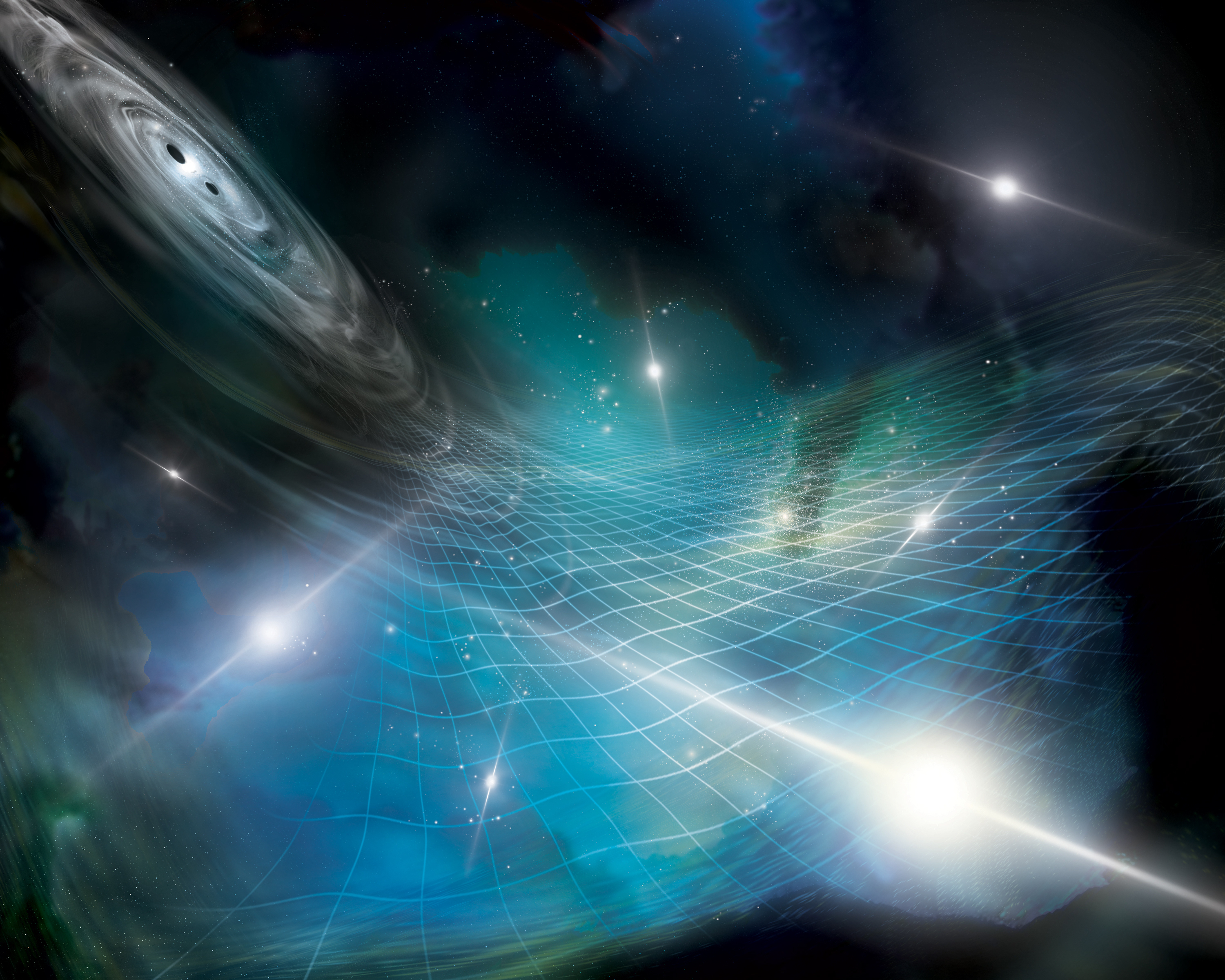Astrophysicists using large radio telescopes to observe a collection of cosmic clocks in our Galaxy have found evidence for gravitational waves that oscillate with periods of years to decades, according to a set of papers published today in The Astrophysical Journal Letters. The gravitational-wave signal was observed in 15 years of data acquired by the North American Nanohertz Observatory for Gravitational Waves (NANOGrav) Physics Frontiers Center (PFC), a collaboration of more than 190 scientists from the US and Canada who use pulsars to search for gravitational waves. International collaborations using telescopes in Europe, India, Australia and China have independently reported similar results.
Unlike the fleeting high-frequency gravitational waves seen by ground-based instruments like LIGO (the Laser Interferometer Gravitational-wave Observatory), this continuous low-frequency signal could be perceived only with a detector much larger than the Earth. To meet this need, astronomers turned our sector of the Milky Way Galaxy into a huge gravitational-wave antenna by making use of exotic stars called pulsars. NANOGrav's 15-year effort collected data from 68 pulsars to form a type of detector called a pulsar timing array.
University of Wisconsin-Milwaukee's Dr. Sarah Vigeland who, with Dr. Stephen Taylor from Vanderbilt University, is spearheading NANOGrav's effort to determine the source of the signal, says, "Now that we have evidence for gravitational waves, the next step is to use our observations to study the sources producing this hum. One possibility is that the signal is coming from pairs of supermassive black holes, with masses millions or billions of times the mass of our Sun. As these gigantic black holes orbit each other, they produce low-frequency gravitational waves."
The NANOGrav PFC was originally based at UWM from 2014 to 2019.
See the full Press Release for more information
The work was published in a series of papers in the Astrophysical Journal Letters:
- Agazie et al. (2023) The NANOGrav 15-year Data Set: Bayesian Limits on Gravitational Waves from Individual Supermassive Black Hole Binaries, ApJL, in press, 10.48550/arXiv.2306.16222
- Agazie et al. (2023) The NANOGrav 15-year Data Set: Search for Anisotropy in the Gravitational-Wave Background, ApJL, submitted, 10.48550/arXiv.2306.16221
- Agazie et al. (2023) The NANOGrav 15-year Data Set: Constraints on Supermassive Black Hole Binaries from the Gravitational Wave Background, ApJL, in press, 10.48550/arXiv.2306.16220
- Afzal et al. (2023) The NANOGrav 15-year Data Set: Search for Signals from New Physics, ApJL, in press, 10.48550/arXiv.2306.16219
- Agazie et al. (2023) The NANOGrav 15-Year Data Set: Detector Characterization and Noise Budget, ApJL, in press, 10.48550/arXiv.2306.16218
- Agazie et al. (2023) The NANOGrav 15-year Data Set: Evidence for a Gravitational-Wave Background, ApJL, in press, 10.48550/arXiv.2306.16213
- Agazie et al. (2023) The NANOGrav 15-year Data Set: Observations and Timing of 68 Millisecond Pulsars, ApJL, in press, 10.48550/arXiv.2306.16217
 Artist’s interpretation of an array of pulsars being affected by gravitational ripples produced by a
supermassive black hole binary in a distant galaxy. Credit: Aurore Simonnet for the NANOGrav
Collaboration.
Artist’s interpretation of an array of pulsars being affected by gravitational ripples produced by a
supermassive black hole binary in a distant galaxy. Credit: Aurore Simonnet for the NANOGrav
Collaboration.